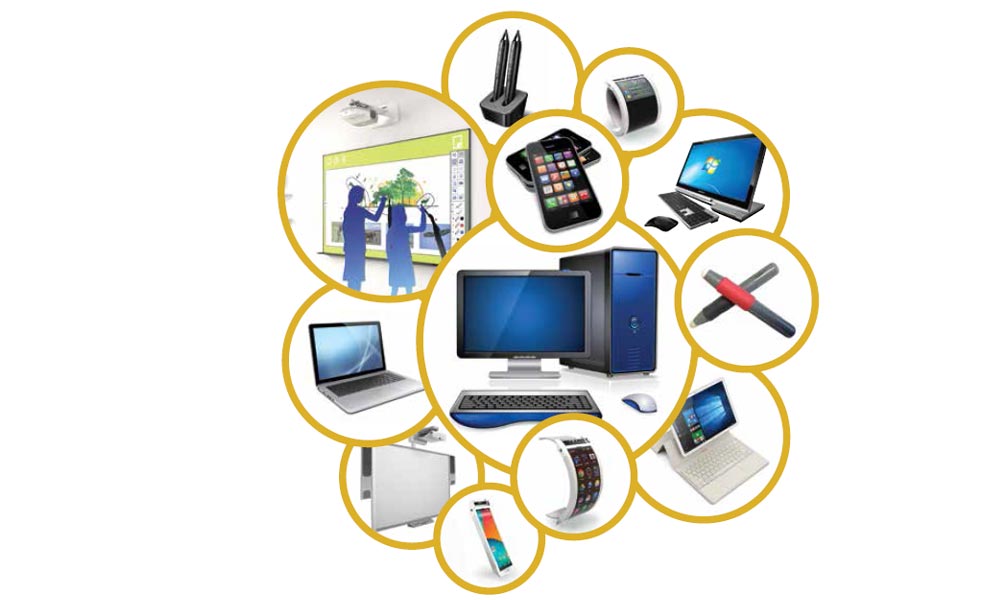
With digital space conquering almost every aspect of human life, education is one such segment which has witnessed remarkable transition with digital tools, systems and solutions. This piece of digitalLEARNING takes a sneak peek into the upcoming ERP segment and makes an attempt to decipher some of the key unresolved issues
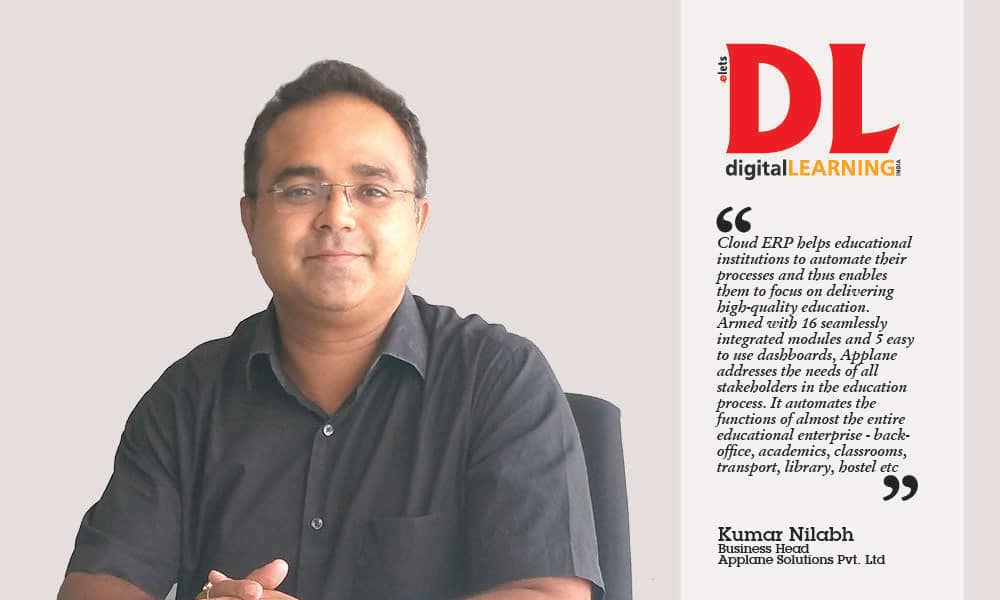 To quote internationally acclaimed and recognized author Heidi Hayes Jacobs “Teachers need to integrate technology seamlessly into the curriculum instead of viewing it as an add-on, an afterthought, or an event.” The two liner exactly defines what is happening in the world of education today. With rapid digitization taking place in almost every sector including education, managing school and higher education campuses via ERP-based applications has witnessed a major transition. This ranges not just from the tectonic shifts in back-end processing but also in terms of new product development catering to the futuristic needs and aspirations of the users.
To quote internationally acclaimed and recognized author Heidi Hayes Jacobs “Teachers need to integrate technology seamlessly into the curriculum instead of viewing it as an add-on, an afterthought, or an event.” The two liner exactly defines what is happening in the world of education today. With rapid digitization taking place in almost every sector including education, managing school and higher education campuses via ERP-based applications has witnessed a major transition. This ranges not just from the tectonic shifts in back-end processing but also in terms of new product development catering to the futuristic needs and aspirations of the users.
 What is ERP
What is ERP
ERP basically stands for ‘Enterprise Resource Planning”, that integrates information and business processes to enable information sharing throughout the organization. However, for digitalLEARNING, ERP has a different connotation, it stands for ‘Educational Resource Planning’, keeping in mind that ERP-based applications have contributed immensely to the magical transformation in the educational institutes, both at school and higher education levels, specifically in the fields of students system and grants management.
The eduERP Market
North America and Europe are considered primarily the honey pots in terms of adoption of eduERP system largely because of high number of universities and advanced infrastructure in these countries.
The 21st-century Asian education market has opened up a whole new world for technology service providers, specifically for the developers of eduERP application. One of the world’s leading research and advisory company Gartner, Inc. in its report on ERP based education solutions stated that the Software as a Service or SaaS-based ERP solution is expected to grow at 28 percent CAGR. Wherein, the public cloud services market in India has grown at 29.8 percent in 2014, taking it to total USD 550 million. Spending on SaaS has hit USD 218 million in 2014, growing at the rate of 30.3 percent from 2013 to 2014. Gartner has predicted that from 2013 to 2017, USD 4 billion will be spent on cloud services in India and SaaS is the largest overall cloud market segment.
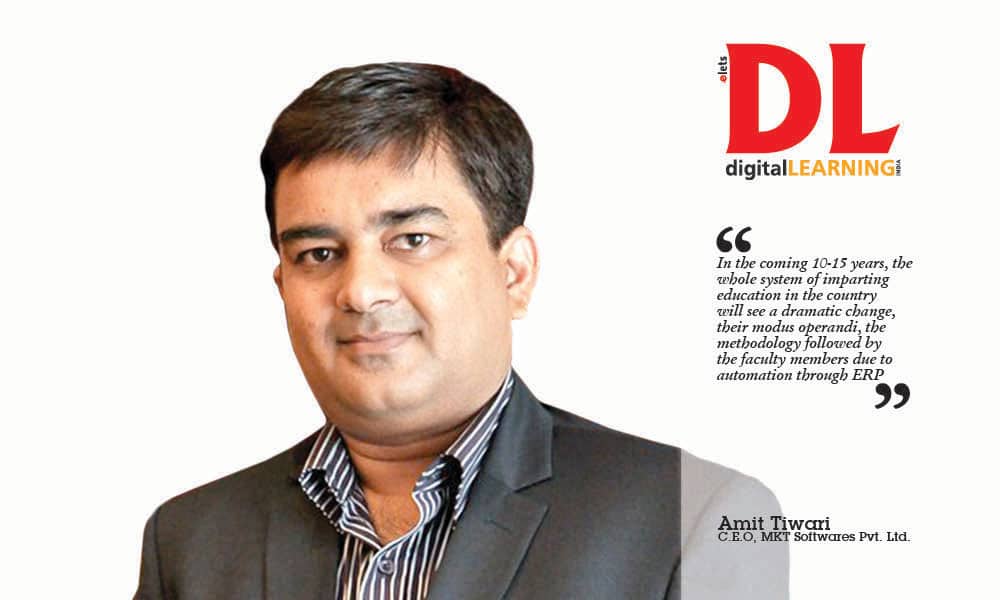 eduERP- A Necessity
eduERP- A Necessity
In view of Karan Garg, “Cloud based solutions and Mobile Apps for Students, Parents, Faculty and Management of Institution are a need of the time. Our flagship product of ‘IFW Campus ERP’ is currently being used by more than 85 Higher Education institutions in India. By following .Net technology religiously we are able to keep track of all the latest offerings from Microsoft and keep on upgrading our processes and solutions for the benefit of our clients and growth of our products.”
Education: An Ever Evolving Industry
The contribution of education to India’s overall growth story irrespective of sectors is widely known and reported. If considered in monetary terms the overall size of education industry is estimated to be more than `20,000 crore which is more than the size of domestic software or the automobile industry.
A unique feature of the education industry which provides for optimum ERP implementation is the combination of large size which is enviable and high growth rate. This makes it one of the most attractive sectors in the country today.
| Quick Bytes | |
|
Dr Manoj Kulshreshtha said, “We have more than 70 successful installations and implementation. Our clientele includes Galgotia Group, Sharda Group, Mody University, Ansal University, Desh Bhagat University, IEC Group and JSS Academy of Technical Education to name a few.
Karan Garg informs, “From Coaching Centers to Universities we are covering the complete spectrum of Educational Institutes in India. Our idea was always to offer complete solutions to this sector. By offering all levels and kinds of solutions to our clientele we are able to meet all their demands.”
Rohit Kumar shares, “We believe in connecting from the root i.e Academic Boards, Senate System, University, Autonomous Campuses, Colleges and Schools. These includes like, Medical, Engineering, Law, Science etc.”
Kumar Nilabh said, “Our applications are best suited for group of schools. Universal education Group, a few schools of DPS groups and a few Army Public schools are some groups using Applane to manage their processes. However, it has also been implemented in other schools, provided the student count is substantial enough to cross break even. Presently we have around 250 schools across length and breadth of the country that are using our products.”
|
|
Growing Complexities
The stupendous growth which the education sector has registered, has also resulted in increasing complexity of the organizations both in structure and operations. They are no longer institutions that impart education alone. Their range of activities include marketing of institutes to students for admissions and corporates for placement, managing internal operations (smooth conduct of classes and motivation for faculty and staff), sophisticated financial cash fl ow planning, coordination with statutory and regulatory authorities etc. In addition to this, educational institutes are prone to the vagaries of market forces due to stiff competition and demanding customers.
Need for Sophisticated Tools
It is clear that with diverse scale of operations educational institutes are no less than fl edging corporate houses. So application of the latest available technology in both internal and external management is essentially required.
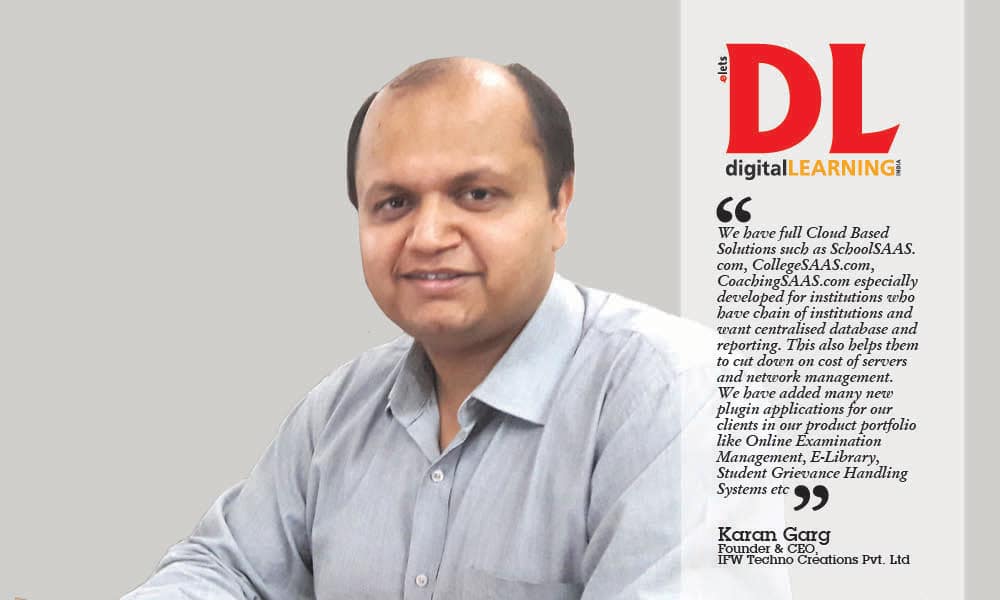
We have seen how an effi cient Management Information System (MIS) has facilitated in cost reduction, responsive and effective decision making and brand enhancement. Nowadays most large organizations across industry lines have reaped signifi cant improvement in performance in terms of cost reduction, speed and accuracy. Somehow, the education sector has lagged behind in this drive for automation probably because of the lack of comprehensive and specifi c ERP solutions.
The distinction of ERP market emerges from the fact that it can be deployed on premises and also on cloud services. Certainly the cloud based ERP has more advantages as compared to premise ERP, both for the vendors as well as the end users, majorly due to the management of security of data which is taken care by the vendors. Depending on the services offered by ERP vendors, the market is categorized as implementation, consulting, training and support, and portal services.
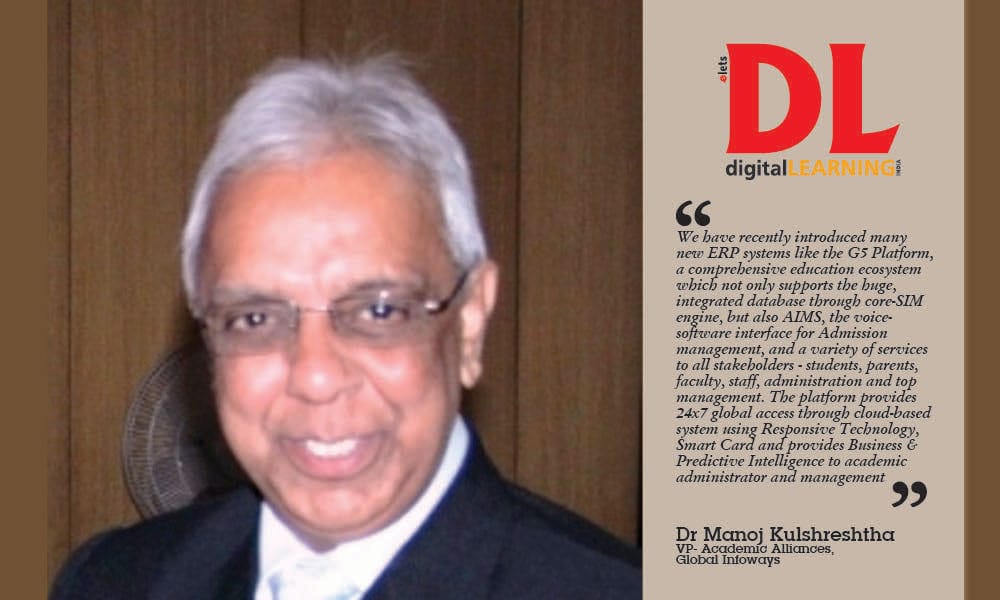 Key Parameters
Key Parameters
Of late the Indian software industry players have started to recognize the untapped demands of the educational institutes. Companies ranging from some proprietary concerns to big Multi National Corporations (MNCs) have come ahead to fi ll up this need. Some of the key parameters that need the tick of the checkbox before choosing an ERP application are as follows:
Integration- For an enterprise engaged in the business of imparting education, the product for automation should compulsorily cater to the integration of all activities such as admission, library, payments, students, hostel etc.
Based on Internet- An internet based ERP application is favored as it enables the end user for a mobilised approach over a localised one. It further empowers the parents to access student information from the comforts of their home/offi ce and also facilitates the management to access important information irrespective of location constraint.
Multiple Users- With the increasing engagement of parents in the academic programmes of their ward, visa-vie the institution, the multi usability of the application becomes indispensable.
Decision support system: The ERP based application should not only be automation oriented in terms of processes, but also facilitate decision making in real time basis. It is through informed decision alone that the true benefi ts of process gains and cost reduction can be achieved.
Aju AS, CEO, GESCIS Technologies briefed on another aspect where ERP is really needed. He shares, “ Our latest release of the software, WebSchool 3.1, is far superior to its earlier versions as well as other campus management software applications. The Vehicle Tracking module is designed to assure parents about their child’s safety by sending SMS alerts once the student has boarded or left the campus vehicle. The online payment module makes fee bills, receipts and long queues, things of the past.”
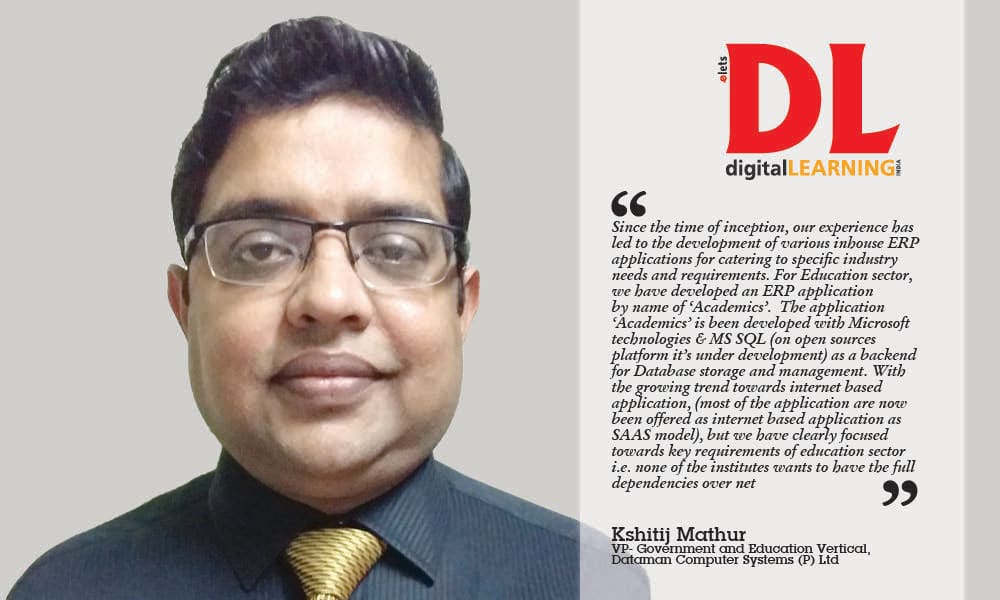 Challenges Ahead
Challenges Ahead
Major challenges lies in the school front. Availability of a good and consistent internet connection is also a matter of concern. It has also been surveyed that parents in Tier II and III cities are not as tech savvy as compared to parents of Tier I cities. Moreover, about 60 percent of customers are based in non-metro cities.
Kshitij Mathur, says “ There are various gaps in the administration of schools, colleges and university. This is because as till date there is no significant approach made towards synchronizing all institutes under one umbrella.” To overcome this challenge, he suggests, “ In future, growth of ERP should be particularly from the government owned schools and colleges.”























